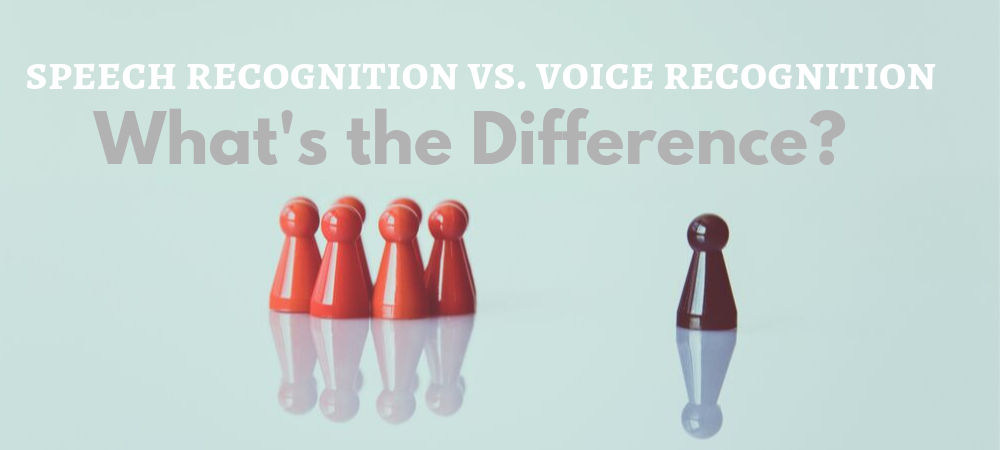
With Artificial Intelligence (AI) increasingly becoming a staple in our day-to-day lives, confusion around the correct use of the related lingo is very common. This is especially the case in conversations between non-experts and implies some people could be vulnerable to marketing ploys that take advantage of the misuse of this terminology.
One particular example is the difference between speech recognition and voice recognition, which are often used interchangeably. Are the two terms similar? Yes, but do they refer to and mean the same thing? Not at all! Read on for the key differences in their definition and application so you can use the terms with confidence.
Speech Recognition for The Masses
The purpose of speech recognition is for a computer or machine to successfully identify the words spoken by absolutely anyone. With this method, there is no need to pay attention to more personal details such as accent, cadence, and the like.
The main goal with this technology is to achieve maximum accuracy and speed with speech recognition, well surpassing even the highest capability of humans. Automation of this process has the potential to save an incredible amount of valuable time that can be channeled into other more productive activities.
At present, speech recognition technology has not yet achieved 100% accuracy, despite having been around since the late 50s. While current accuracy rates can be as high as 98%, the main obstacle to achieving complete precision is the high variation that exists in human speech. Everyone has their own unique style of speech, including accent, pronunciation, and enunciation.
Voice Recognition for Personalization
On the other hand, voice recognition is about being able to identify and understand one specific voice. The most widespread use of this technology is with virtual assistants such as Apple’s Siri or Amazon’s Alexa. In fact, it has been predicted that 75% of US households will own and use at least one smart speaker by 2020.
The main goal of voice recognition technology is to enable voice command features. The first step of correctly recognizing the speaker acts as a secure identification process. This is particularly important when the authorization of payments is required and as such, acts as a biometric security measure.
For example, imagine you ask your phone or smart home device to look into train times for a specific time, date and journey. Accurate identity verification based on voice recognition would be necessary to then book the train ticket of choice.
How the Two Technologies Apply to Transcription
While we’ve made the distinction between voice and speech technology, the common ground between the two is that they both involve the conversion of audio to text. Seeing as this is exactly what transcription is all about, it’s clear to see the connection both technologies have to the service.
Voice recognition utilizes the input of text derived from one specific speaker to follow their command and perform an exact function. Speech recognition is applied more directly to transcription services as a way of automating the generation of transcripts, yet the uses of this digitized output are numerous. What’s more, speech recognition allows for the identification of multiple speakers, unlike voice recognition.
At TranscribeMe, we pride ourselves on our best-in-class online transcription services using the latest technology in Automatic Speech Recognition (ASR) and Natural Language Processing (NLP). We work with a large community of highly-skilled transcriptionists and exclusively use top quality data sets to train our engines through machine learning. Thanks to this, we are able to offer transcript accuracy starting at 98% in a number of languages and dialects.
Interested to know more about what our ASR can do for your business? Get in touch with our sales team today to request a demo and further information.